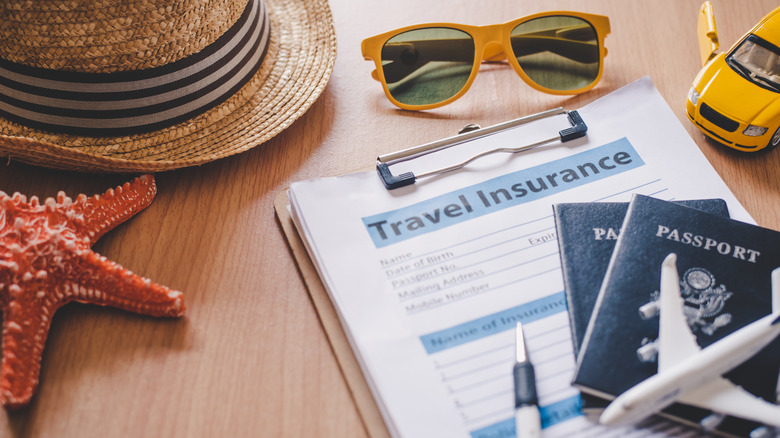The Eye-Watering Cost Of Travel Insurance For Overseas Tourists Visiting The US
If you're an overseas traveler planning an upcoming trip to the U.S., you've probably ticked off several tasks on your checklist of things to always do before a vacation, including finding appropriate insurance. But if you're perusing the various options, you may have noticed that, as soon as you add "United States of America" to your list of destinations, the cost of your potential plan goes up significantly (even if you're just coming in from Canada!). There are a few reasons why this is the case, but it is primarily due to the high cost of living and medical care in the U.S.
Generally, health services and pharmaceutical drugs are significantly more expensive than they would be in places like Europe and Asia, as there isn't a national healthcare system. And insurance providers account for this when they set their prices. Of course, plans can vary wildly based on your age, any pre-existing health conditions, the length of your trip, and other factors. But it could add an eye-watering amount to the cost of your vacation — perhaps up to several hundred dollars if you're older and want comprehensive coverage.
However, although travel insurance for tourists to the U.S. may not be cheap, the alternative is much worse. An ambulance ride alone could be over $1,000, while a visit to the ER without coverage could set you back $2,400, with serious issues racking up much more than that. Importantly, some hospitals in America may not even provide care to the uninsured. So if you're trying to cut down on trip costs and are asking yourself, "Do I really need travel insurance?", the answer is most definitely yes — if the worst-case scenario comes to pass, you could be looking at one of the most expensive vacations of your life.
Finding the best travel insurance plan for your trip
It's ideal to plan your vacation in its entirety before you book insurance — not only so the dates of your policy will be correct, but also so you know the types of activities you'll be undertaking. Research and compare plans thoroughly — be aware of the surprising things your travel insurance probably doesn't cover. Some policies are very comprehensive (and therefore more expensive), with a range of inclusions like trip interruption, delay, and cancellation; emergency dental and optical care; worldwide security assistance; specialist care; emergency evacuation and repatriation; and adventure sports (which are usually offered as an add-on). This kind of policy might be perfect for you if you're participating in a snowboarding or rock climbing adventure in a remote area. And there's even a new type of travel insurance that covers dangerous heat waves.
If affordability is your primary concern, note that many insurance plans offer various tiers of coverage. Opt for a standard plan without add-ons if you don't plan to bring sporting equipment or expensive electronics that require insurance. If you are happy with a lower limit, many basic plans will still provide at least $100,000 of medical coverage. This is likely going to suit you fine if you're simply heading to a big city for museum visits and sightseeing. And, in general, for the young and relatively healthy, plans won't be exorbitantly priced — on average, at the time of this writing, a month-long trip for a 30-year-old ranges from $96 to $115, according to MarketWatch (but increases threefold for a 70-year-old!). Whichever policy you choose to purchase, ensure that you've read the fine print carefully. In almost every case, conditions apply to coverage, and reimbursement may not be as easy as you'd think if you don't have the required documentation.

